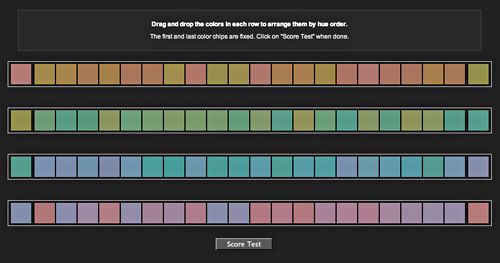

If you aren’t colour blind, you’d easily be able to see the green ‘3’ against the red background. For example, there could be a number 3 traced out in different shades of green spots, against a background of different shades of red spots.

There is a number “hidden” in the spots, in different colours. This involves a circle filled with different coloured spots. The main colour blindness test is called the Ishihara colour test. There are simple tests your optometrist can give you to see if you are colour blind. If you have total colour blindness, you will see everything in shades of grey. This condition is called achromatopsia or monochromacy.

It is very rare to be completely unable to distinguish any colours. Yellow looks white, orange looks pink, and purple looks red.įinally, if two types or all three types of cones are missing or damaged, you will not be able to distinguish between colours at all. It affects less than 1% of both men and women.² Blue–yellow colour blindness makes it difficult to distinguish between blue and green, and also between yellow and red. This is sometimes incorrectly described as being blue–green colour blind.īlue–yellow colour blindness is less common than red–green colour blindness. This means you cannot see blue, so you will be blue-yellow colour blind. If the cones for detecting blue light are missing or don’t work properly, this is called tritanopia. Protanopia and deuteranopia both result in red–green colour blindness (because if you can’t see red or you can’t see green, then you can’t distinguish between red and green). If the cones for detecting green light are missing or don’t work properly, this is called deuteranopia or deutan colour blindness.

If the cones for detecting red light are missing or don’t work properly, this is called protanopia or protan colour blindness. Types of colour blindness can also be classified based on which cones are damaged or missing. You may also confuse red with black or have difficulty distinguishing different shades of purple from blue. ¹,² If you have this type of colour blindness, you will have difficulty distinguishing between red, yellow and green. This affects around 1 in 12 men and around 1 in 200 women. The most common type of colour blindness is red–green colour blindness.


 0 kommentar(er)
0 kommentar(er)
